
The Chevy Camaro legend was born Sept. 29, 1966 when GM introduced its answer to Ford‘s popular Mustang. GM designed the Camaro (and sister model Pontiac Firebird) to bring the sports car driving experience to the average driver. These cars featured a long hood, short deck, seating for four, and a unitized body construction with a separate front subframe. There were only 2 Camaro models, the Sport Coupe and the Convertible. Buyers could order them with no less than 60 factory options, 4 of which were just the engines. Engine choices ranged from the 250 cubic inch straight-six to the 396 V8.
Interestingly, the name “Z28” that is now and forever associated with the Chevy Camaro started out as a sales code for a “Special Performance Package”. GM codes all its options and accessories with a 3-digit alpha-numeric code. GM offered option Z28 only so that it could certify these cars for stock racing. It included a special 302 cu. in V8 made only for this application, a heavy duty radiator, special suspension, dual exhaust, 15″x6″ wheels, 3.73:1 Positraction rear axle, special stripes, and power front disc brakes. Only 600 models were sold with option Z28 in 1967, making them extremely rare collectibles today. The Indy 500 race chose the Camaro as the Pace Car for the races in both 1967 and 1969.
Camaro continued with minor changes for 1968 and 1969 while designers were hard at work on the 2nd generation models.
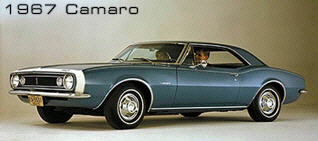
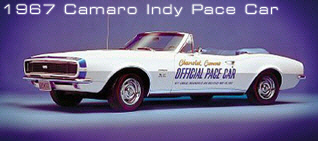
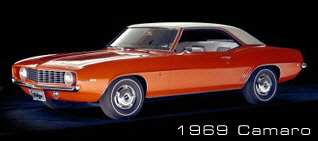
On February 26, 1970 GM showed the world the all-new Chevy Camaro body style. Although the car retained its 2+2 seating and unibody construction, the exterior style was a radical change and there would be no convertible this time. GM’s designers looked to Europe, borrowing heavily from such cars as the 1962 – 1964 Ferrari 250GT Berlinetta Lusso for the styling. Just looking at the two cars pictured below the similarities are quite obvious. In fact, the name Berlinetta would come back as a short-lived trim level on the Camaro later in the 1970s. There were 8 choices of engines in 1970, the strongest being the 375hp V8 available with the “SS” package.
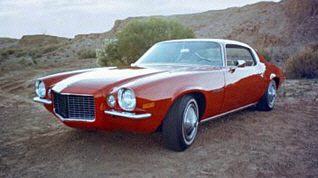
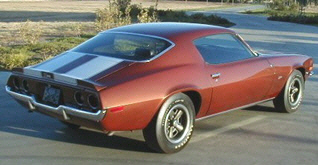
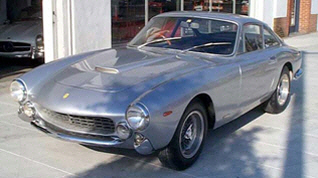
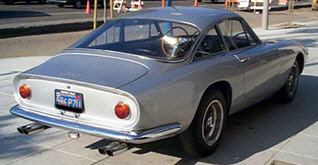
Sales of Chevy Camaro models dropped to 114,630 in 1971 and even lower in 1972 due to a 6 month strike by workers at the Norwood, Ohio assembly plant. GM had to scrap about 3,000 partially finished Camaros when the strike ended because they did not meet the new emission and safety standards for 1973 models.
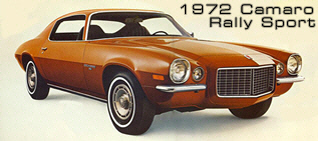
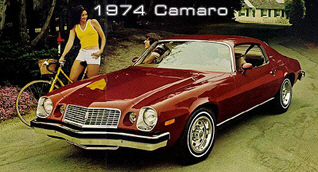
New laws required stronger bumpers, so the design now included full-width chrome bumpers, which changed to an aluminum bar for 1974-77. Strict pollution standards on the engine and the requirement of unleaded gas meant a lower power output; the Z28 option V8 now only produced 245hp. High-Energy Ignition became available on some models by mid-year and standard from 1974 on. This system had the ignition coil inside the distributor and produced about 20,000 volts to the spark plugs for a more complete fuel burn, leaving less pollution in the exhaust. Also, GM introduced the mini-spare tire, power windows, and seat belt warning buzzers for the Chevy Camaro this year.
The body underwent a minor redesign in 1974, but the famous wrap-around rear window did not appear until the 1975 models. 1974 also marked the end for the Z28 option due to the ever-tightening pollution standards and insurance costs. In 1975, the only engines available were a 250 straight-six and a 350 V8 with 2- or 4- barrel carburetor, and all had the new catalytic converter exhaust system.
During this period in the mid 70s GM focused more attention on interior comfort, features, and appearance which made the Chevy Camaro larger and heavier. New options in 1975 included a half-vinyl roof covering, power door locks, and air conditioning was available on the base 6 cylinder engine for the first time.
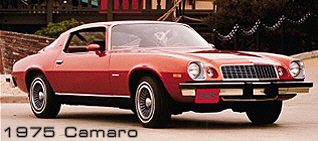
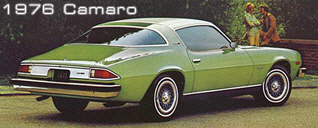
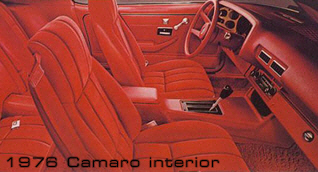
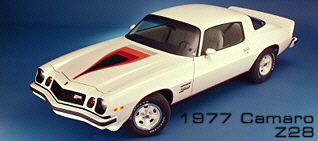
The Z28 returned due to popular demand in 1977 as a separate model for the first time, but the main difference now was in the handling and appearance (the stripes) because the 180 hp, 350 cubic inch V8 did not come close to the kind of power found in previous Z28 models.
The next minor redesign came for the 1978 model year, this time incorporating urethane body-color painted bumper covers. Also, T-Tops were available for the first time. This was a roof with two tinted glass hatches and a “T” bar in the center, which simulated the open air feel of a convertible. Sales soared to the highest numbers ever on the strength of this new style, and went even higher in 1979 reaching the highest sales in the history of the Chevy Camaro line at 282,571.
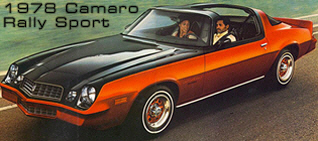
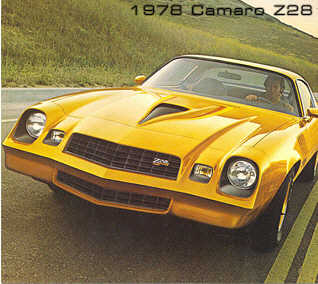
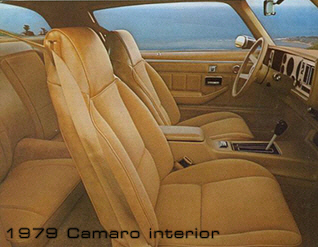
By 1979, the Chevy Camaro family had grown to 4 models: Sport Coupe, Rally Sport, Z28, and the new Berlinetta. This was GM’s attempt to market the Camaro to a female buyer; the model featured bright chrome/plastic painted trim, special wheels and a softer ride, and extensive acoustic insulation on the interior.
In 1981, GM even offered wire wheel covers on the Berlinetta! Even though the Z28’s engine now boasted 190hp, the Camaro was quickly losing it’s place as a “sports car for the average driver” and sales declined sharply in 1980 and ’81 as designers readied the “next big thing”.
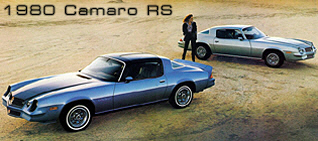
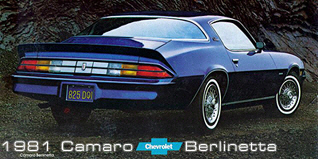
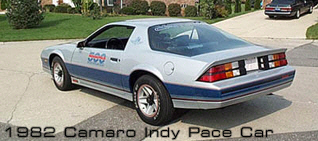
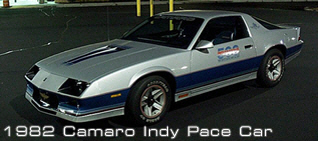
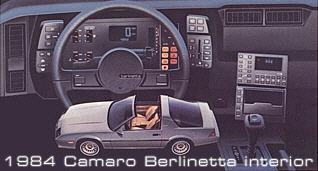
Once again, GM proved it could create a design that would be so different and unlike anything on the road as they had done in 1970. In late 1981, GM unveiled a totally new eye catching design for the ’82 Camaro incorporating some design elements from the second generation model. Although there was another major redesign in 1993, many of the 1982 styling characteristics carried thru right up to the 2002 models. The chassis design was still unibody/front subframe, but this time the body was a 2+2 seating hatchback. Aerodynamically, the drag coefficient of this style was .368, the lowest in GM’s history, meaning that this car was the most aerodynamic GM had ever built. There were only 3 models: Sport Coupe, Berlinetta, and Z28. The Z28’s 305 cubic inch V8 now featured “cross-fire injection” which was an intake system with two air cleaners in one housing, the same as found on the Corvette. There was a dark side though.
The base engine that powered the Sport Coupe was a 2.5 liter 90hp 4 cylinder! For the first time, the heavy Camaro now had the same power as a typical subcompact. And taking top honors for tackiness, the 1984 Berlinetta model featured a “Star Wars” style digital dash and radio panel. Although 1984 was the 3rd best selling year in Camaro history with 261,591 units sold, the Berlinetta model did not sell well and was gone by 1986.
There was hope though. In 1985 the International Race of Champions (IROC) chose the Chevy Camaro for its stock car races, and GM came out the an “IROC-Z” model which was essentially a Z28 with special graphics. The V8 now featured “Tuned Port” fuel injection, and a bigger V6 engine replaced the weak 4 cylinder engine in 1986. A convertible also returned to the model lineup for the first time since 1969. In 1987, the Z28 gained power with the addition of a new 350 cubic inch V8 that rated 225hp.
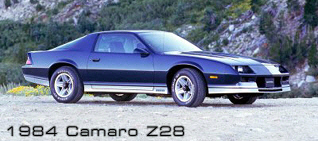
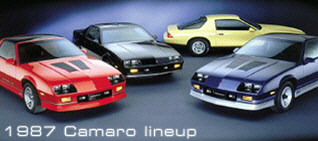
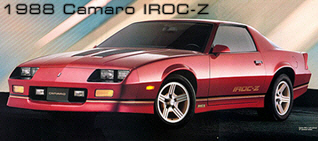
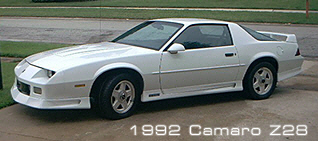
In 1988, Chevy dropped the Z28 again, leaving the IROC-Z to fill the role of the high-performance Camaro model, but IROC chose a different car in 1991 which meant Chevy had to drop the IROC-Z and return the Z28 to the model line. A driver’s side airbag was first offered in 1990, and a special 25th anniversary model was built in 1992 which was also the final year for the 3rd Generation of Camaro.
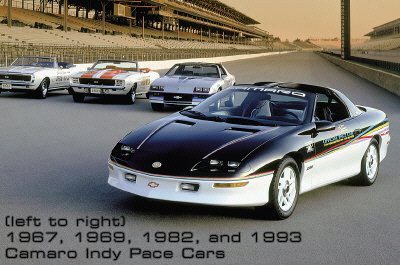
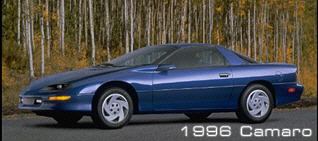
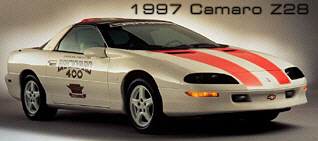
Chevy introduced the 4th Generation Camaro in mid 1993, and once again the Indianapolis 500 race chose it as its Pace Car for the 1993 race. Production moved from Van Nuys California to a plant in Ste. Therese, Quebec, just outside of Montreal. Engines included a new 3.4 liter V6 for the coupe, and a 275hp “LT1” V8 (same engine as in the Corvette) for the Z28. The body on this model was the biggest news: it was made of composite plastic all over, except for the hood and rear quarter panels. Design work for the convertible model did not finish in time for the midyear launch so it came out the following year. A new 6-speed manual transmission also was added to the Z28 in 1994, along with traction control and a larger more powerful 3.8 liter V6 for the Coupe in 1995.
GM brought back the famous “SS” model in 1996. The Super Sport had 25 more hp over the already powerful Z28 along with other performance enhancements designed by SLP Engineering. Changes including a new hood and front end in 1998 were partly to accommodate the new “LS1” V8 for the Z28. This new engine, also found in the ’98 Corvette, was a completely new design putting out well over 300hp and making Camaro one of the fastest cars in its class. Low sales (less than 50,000 each year since 1997) forced GM to drop the Camaro and Firebird models at the end of the 2002 model year. 2002 models were available in special “35th anniversary” trim with no changes over 2001 and 2000. Cumulative sales for the Camaro model stood at 4,393,284 through August 2001.
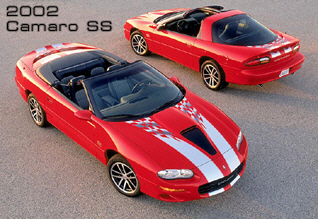
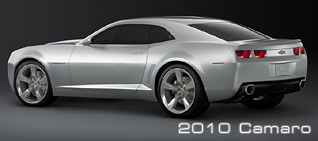
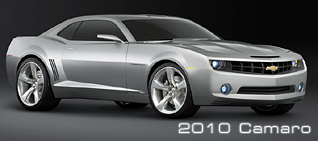
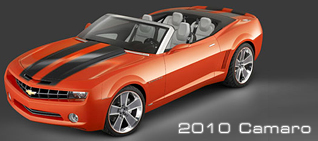
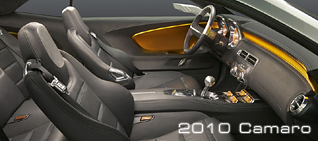
In January 2006, GM announced the return of the Camaro. Production on the 5th generation model began in 2009 and entered the market as a 2010 model. This retro design takes cues from the 1969 model but rides on a completely new rear wheel drive chassis. Production also moved to Oshawa, Ontario. Notable features include 21 inch wheels, 323hp V6 & 400hp V8 engines (2012 models), manual & automatic transmissions, active fuel management, and a convertible model. A special ZL1 model with a 580hp supercharged V8 would be the fastest Camaro ever built in 2012. GM refreshed the design in 2014, adding a new grille and tail lamps and the return of the Z28 featuring a 500hp V8, the same engine found in the Z06 Corvette.
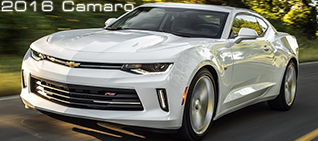
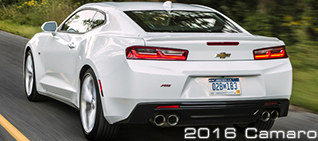
The sixth generation Camaro debuted in 2016. While the previous generation rode on GM’s full size rear wheel drive platform designed by their Holden subsidiary in Australia, the new model is a variant of the new GM-designed Alpha platform. The only other vehicles that share this chassis are the Cadillac ATS & CTS. The Alpha platform allows GM to make the new Camaro 200lbs lighter and a couple inches shorter in length and height. Also, production of the Camaro moved from Canada to GM’s Lansing Assembly in Michigan.
Style-wise, the sixth generation Camaro is not significantly different than the 2015. The Z28 trim has been dropped, leaving only the LS, LE, SS, and the fastest variant called 1LE. Engines include a standard 2.0 turbocharged four, 3.6L V6, 455hp 6.2L V8 (SS), and the 1LE gets a supercharged 650hp version of the 6.2L V8, the same one from the Corvette Z06. A new 8 speed automatic transmission debuted in 2017.
